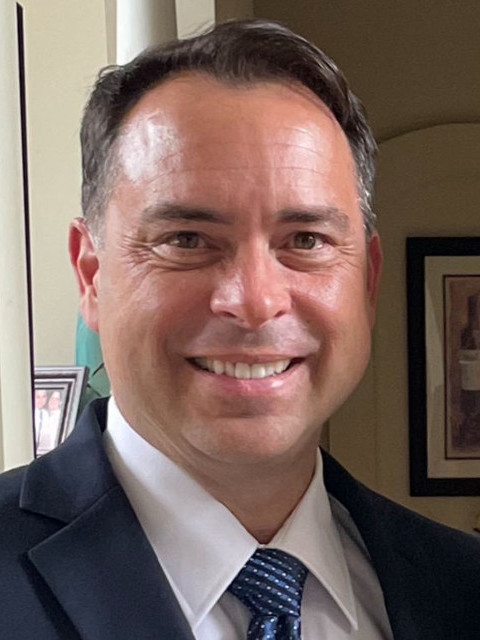When you hear “Vail Resorts,” most people think of sleek gondolas, powder days, and the iconic Vail Mountain in Colorado. But behind that image lies a much broader spread of peaks, valleys, and ski operations spanning continents. So if you’ve ever pondered “How many mountains does Vail own?”, the answer is surprising—and illuminating.
In this piece, we’ll peel back the layers of Vail Resorts’ holdings: how many resorts they own and operate (as of 2025), where they’re located, how the portfolio grew over time, and what that means for the skiing world. You’ll also get a few stories and practical takeaways about how scale shapes your experience on the snow.
What Does “Own” and “Operate” Mean in the Ski World?
Before we hammer out numbers, it’s important to clarify terms. In the ski industry:
- Own often means holding a controlling stake or full ownership of the real property.
- Operate may also include managing resorts under lease, management contracts, or joint ventures.
- Resort vs. mountain: One “mountain resort” might include multiple peaks, bowls, or summits under one lift/terrain infrastructure.
So when we say “Vail owns 42 mountain resorts,” we mean the company owns and operates 42 distinct resort destinations, each potentially with multiple peaks or terrain areas. (This is how the company itself describes its portfolio.)
The Number: Vail Operates 42 Mountain Resorts (As of 2025)
The short, up-to-date answer: Vail Resorts owns and operates 42 mountain resorts globally.
Here’s how that breaks down:
- In North America (U.S. and Canada), Vail controls many of the heavy-hitters—Vail Mountain, Breckenridge, Park City, Whistler-Blackcomb, Keystone, Heavenly, Northstar, and more.
- In Australia, they operate multiple resorts (e.g. Falls Creek, Hotham) as part of their global reach.
- They’ve also expanded into Europe, acquiring resorts such as Andermatt-Sedrun (Switzerland) and Crans-Montana.
It’s not trivial: managing 42 distinct resort locations requires coordination across many climates, regulatory regimes, and infrastructure systems.
The Growth Path: How Vail Reached 42 Resorts
Vail didn’t start as a global resort empire. Its ascent was gradual, driven by acquisitions, strategic expansion, and consolidation of ski holdings.
Early Foundations: Colorado Roots to Multi-Resort Player
- 1962: Vail Mountain opens as a standalone ski resort in Colorado.
- Over decades, Vail acquired nearby Colorado resorts: Beaver Creek, Keystone, Breckenridge.
Scaling via Acquisitions and Mergers
- In the 2000s and 2010s, Vail expanded beyond Colorado, purchasing resorts in California, Utah, the East, the Midwest, even Australia.
- The Peak Resorts acquisition (2019) was a big moment: Vail bought 17 resorts in the Midwest and Northeast in one sweeping deal, adding many “local” mountains to its portfolio.
- European moves: in 2022, Vail purchased a stake in Andermatt-Sedrun in Switzerland, and in 2024 added Crans-Montana.
The result: from a local Colorado resort to a global mountain network.
Examples of Notable Resorts in Vail’s Portfolio
To make this more concrete, here are some prominent resorts they own or operate:
- Vail Mountain, Colorado – The namesake and flagship.
- Breckenridge, Colorado – Five peaks, historic and popular.
- Whistler Blackcomb, British Columbia – One of the largest ski areas in North America.
- Park City / Canyons, Utah – Massive Utah presence.
- Heavenly, Northstar, Kirkwood (California / Tahoe region)
- Mount Snow, VT – Acquired via Peak Resorts.
- Okemo, VT; Mount Sunapee, NH – Also part of the East holdings.
- Falls Creek, Hotham (Australia) – Part of their southern hemisphere reach.
- Andermatt-Sedrun, Switzerland; Crans-Montana, Switzerland – European expansion.
This portfolio reflects geographic spread, climatic diversity, and a mix of destination and local/regional resorts.
Why Owning 42 Mountains Matters — Scale, Risk & Opportunity
Owning 42 resorts is more than a bragging count—it shapes how Vail does business, competes, and faces challenges.
Benefits of Scale
- Risk diversification: One bad snow season in Colorado can be partially offset by solid snow elsewhere (Australia, Europe, etc.).
- Operational efficiencies: Best practices, supplier scaling, shared technology systems (ticketing, apps, data analytics).
- Pass leverage: The Epic Pass system becomes more compelling when it unlocks many mountains across continents.
Challenges & Risks
- Capital intensity: Maintaining 42 resorts—lifts, snowmaking, lodges—requires big investments.
- Regulatory, environmental, weather: Different jurisdictions, climate risks, local opposition.
- Operational complexity: Each resort has unique geography, staff, infrastructure, weather quirks.
- Brand cohesion & guest experience: Ensuring consistency across diverse resorts is difficult—but important for passholders’ expectations.
Common Misconceptions & Clarifications
“Vail Owns 19 Mountains” – That’s Outdated
Some older sources (e.g. SnowPak) still state “19 ski resorts” under Vail—and that was true at a previous point. But since then, Vail’s acquisitions (Peak Resorts deal, international expansion) have pushed the count upward to 42.
“Own” Doesn’t Always Mean 100%
In some cases, Vail may hold majority or controlling stakes rather than absolute ownership. For example, with Andermatt-Sedrun, Vail purchased a 55% stake.
What This Means for You, the Skier or Rider
Knowing Vail’s reach isn’t just trivia—it can affect your decisions and expectations.
- Pass choices matter more: The Epic Pass becomes more valuable as it covers more resorts across geographies.
- Expect inconsistencies: Don’t assume the grooming, amenities, or experiences are identical at every resort.
- Use balance wisely: A bad snow year in one region might push you to visit a different resort in the same network.
- Know where your money goes: Some of your lift pass dollars support large-scale capital investments across the network.
FAQs – How Many Mountains Does Vail Own?
Q1: Does Vail own 42 resorts or mountains?
A: Vail Resorts owns and operates 42 mountain resort destinations globally as of 2025, meaning 42 distinct ski resort sites (which can include multiple peaks).
Q2: How many of those resorts are outside the U.S.?
A: Several are international: in Australia (e.g., Falls Creek, Hotham) and in Europe (Andermatt-Sedrun, Crans-Montana).
Q3: Is Vail the largest ski resort owner?
A: It’s among the largest. Many resorts globally remain independent, but Vail stands out for scale, global reach, and its Epic Pass network.
Q4: Does Vail always fully own each resort?
A: Not always. Some interests are majority stakes or joint ventures (e.g., Andermatt-Sedrun at 55%).
Q5: Did Vail’s portfolio always include 42 resorts?
A: No. Over time, through acquisitions and expansion—especially the Peak Resorts purchase and European deals—Vail’s portfolio has grown to 42.
Conclusion
So, how many mountains does Vail own? The answer is 42 mountain resorts—spread across continents, climates, and business models—each contributing to Vail Resorts’ footprint in the ski industry. That number reflects decades of strategic acquisition, operational complexity, and ambition.
Whether you’re planning a ski trip, comparing passes, or just curious about who controls your favorite slopes, that count matters. It means more options, more challenges, and greater potential for choices across your skiing life.
Thinking about which of those 42 resorts you should visit first—or how Vail’s scale affects pass value? I can help you with that too. Let me know what you’d like to explore next.
Planning your Vail vacation? Don’t miss our guides on the best hotels in Vail and the best restaurants in Vail to round out your stay.
Summary (TL;DR)
Vail Resorts owns and operates 42 mountain resorts worldwide (as of 2025). Their holdings span the U.S., Canada, Australia, and Europe. This scale gives them operational advantages, diversification, and pass leverage, but also brings complexity and capital demands.

